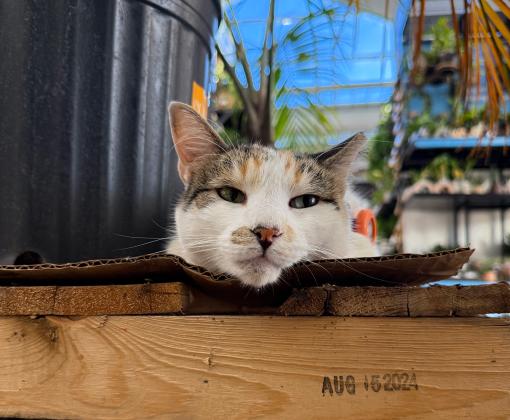
FIV in Cats: Feline Immunodeficiency Virus FAQs
FIV stands for feline immunodeficiency virus. FIV in cats typically causes a weakening of the cat’s immune system. It is the same class of virus as HIV (a lentivirus); however, only cats can get FIV. People and dogs cannot. The following are some frequently asked questions about FIV in cats.
How contagious is FIV in cats?
The most common route of infection is a deep bite wound from an FIV-positive cat to another cat. Feline immunodeficiency virus can also be transmitted via blood, in utero, and from the milk of an infected mother cat. It is very rare for cats to get FIV just from being around infected cats, sharing food bowls, or from a person touching an FIV-positive cat and then touching an FIV-negative cat. Many FIV-positive cats and FIV-negative cats live together in the same home for years without spreading the virus to the non-infected cats.
What are the signs of FIV in cats?
There are no specific symptoms of feline immunodeficiency virus. FIV-positive cats have a weaker immune system, so they are more prone to getting infections, such as upper respiratory infections, ringworm, and dental disease. Other than that, FIV-positive cats tend to live normal lives.
How do I know if my cat has feline immunodeficiency virus?
Because there are no obvious signs of FIV, the only way to know is to do a blood test. The most common screening test is an ELISA test (often called a SNAP test) done by your veterinarian. This test looks for antibodies to FIV. An antibody is a protein made by the cat in response to FIV infection. A cat can test positive as early as two to four weeks after exposure, but in some cases it can take up to eight weeks.

See how your community is doing
Kittens under 6 months old might test falsely positive after having received antibodies from their mother, either in utero or via milk. It can take up to six months for these antibodies to go away. Thus, it is a good idea to retest a kitten testing positive after the kitten reaches 6 months old.
What happens if a cat is FIV positive?
There are no proven treatments to rid a cat of FIV. Most FIV-positive cats handle the disease well, but it is important to concentrate on treating the secondary illnesses.
Can cats with FIV live with other cats?
An FIV-positive cat can live with an FIV-negative cat as long as neither cat is a fighter — or if the FIV-positive cat has no teeth. (FIV-positive cats commonly have severe dental disease, which often means it is necessary to remove all their teeth.) Consider putting both cats in separate rooms until you are confident that they won't fight with each other. Spaying or neutering your cats also can reduce the risk of fighting.
What can be done to prevent the spread of FIV?
Cats should be kept indoors, so they do not fight with an FIV-positive cat. Depending on where one lives, the rate of FIV-positive cats ranges from 4% to 24%.
There is an FIV vaccine, but Best Friends does not recommend it because the vaccine does not have the best efficacy, and after a cat is vaccinated for FIV the cat will test positive for the virus. At this point, no test can differentiate whether a cat tests positive for FIV from the vaccine or from having the infection. In some areas, if a cat escapes and is picked up by local animal control and then tested, the cat might be killed because of a positive test.
How long do cats with FIV live?
Cats with FIV tend to have normal lives, both in quality and duration. They just need to be monitored for infections and dental issues. But if they’re well cared for, they can be healthy, happy, wonderful pets.
